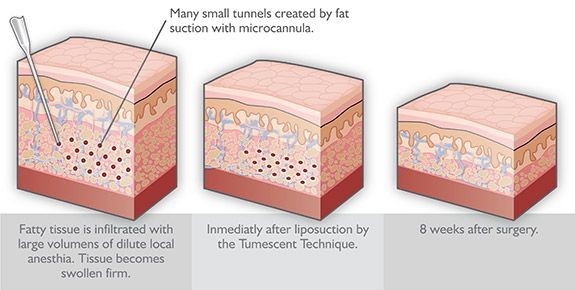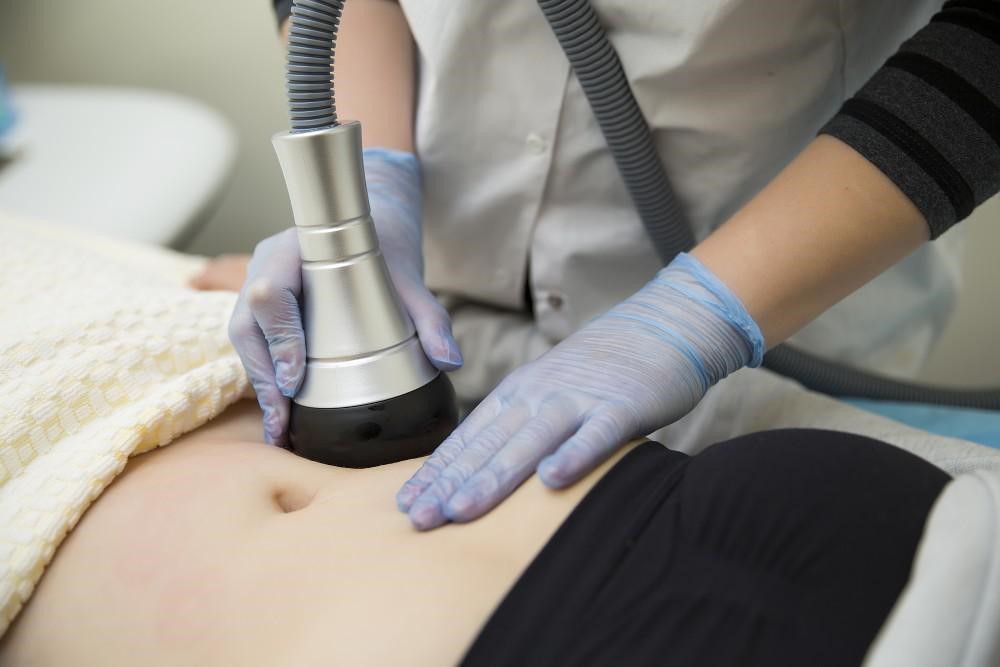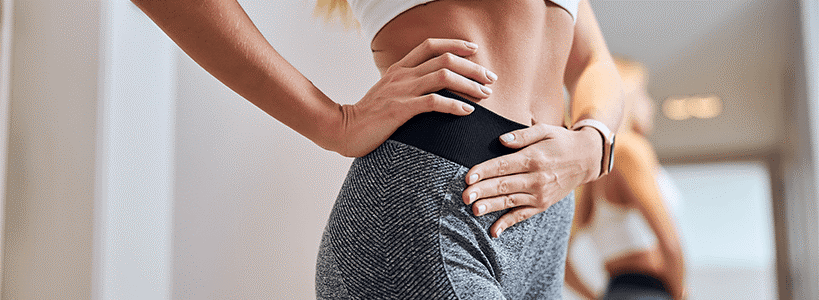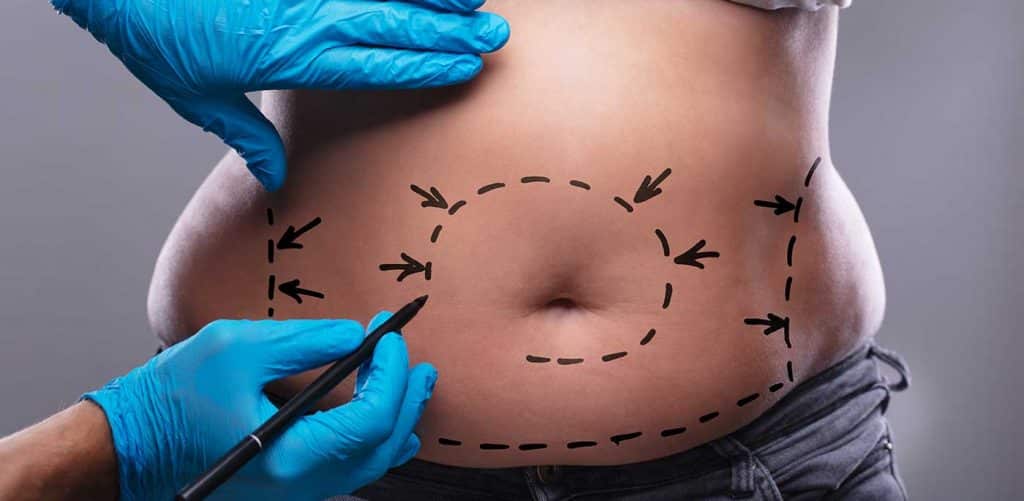type of liposuction : Liposuction is a surgical operation that removes fat from particular parts of the body using a suction technique, such as the belly, hips, thighs, buttocks, arms, or neck. These areas are also contoured (shaped) through liposuction. Liposuction is also known as lipoplasty and body sculpting.
Liposuction is not commonly seen as a weight-loss method or an alternative to weight-loss surgery. If you’re overweight, you’re more likely to lose weight with diet and exercise or bariatric operations like gastric bypass surgery than by liposuction. If you have excess body fat in specific areas but otherwise maintain a constant body weight, you may be a candidate for liposuction.
Table of Contents
ToggleWhat are the different types of liposuction?
Liposuction comes in a variety of forms. Each function slightly differently and has different benefits and drawbacks. Understanding the distinctions between them will enable you to make the best choice for your own body.
In this article we will discuss:
- Why it’s done
- Different types of liposuction
- Suction-assisted liposuction
- Tumescent liposuction
- Ultrasound-assisted liposuction (UAL)
- Laser-assisted liposuction (LAL)
- What is Smartlipo
- How to decide which type of liposuction is best for you
- Final words
- FAQ
Why liposuction is done?
Liposuction is a procedure that is used to remove fat from parts of the body that have not responded to diet and exercise, such as the:
- Abdomen
- Upper arms
- Buttocks
- Calves and ankles
- Chest and back
- Hips and thighs
- Chin and neck
Furthermore, liposuction can be done to reduce breast size or cure gynecomastia. Fat cells grow in size and volume as you acquire weight. Liposuction, in turn, reduces the amount of fat cells in a specific location. The amount of fat eliminated is determined by the appearance of the area as well as the volume of fat. The contour alterations that result is often permanent – as long as your weight remains consistent.
Following liposuction, the skin conforms to the changed contours of the treated areas. Smooth skin is more likely if you have good skin tone and elasticity. However, if your skin is thin and lacks elasticity, the skin in the treated regions may appear loose.
Cellulite dimpling or other skin surface abnormalities are not improved by liposuction. Similarly, liposuction will not eliminate stretch marks.
You must be in good health and free of problems that could complicate surgery, such as limited blood flow, coronary artery disease, diabetes, or a weakened immune system, to be a candidate for liposuction.
Different types of liposuction:
Diet and exercise are the first things that come to mind when it comes to slimming down and shaping up. Unfortunately, our bodies can have persistent fat deposits or carry weight in ways that normal diet and exercise cannot correct. Even if you frequently exercise and eat well, these obstinate spots can appear lumpy, prominent, or imbalanced. Liposuction surgery is a common approach to target these resistant areas and modify your physique.
There are numerous type of liposuction, and you should consult with a skilled plastic surgeon to determine which is ideal for your needs. Your surgeon will be able to explain the benefits and drawbacks of each variation, the treatment regions for which each is suited, and how past surgeries may affect the results. Understanding the fundamental differences between liposuction kinds is the first step toward a more contoured figure.
Suction-assisted liposuction
This is the most common and oldest type of liposuction. Small incisions are made over the area to be suctioned in this method of liposuction. To suck out fat cells, a hollow needle called a cannula is introduced through these incisions.
This surgery can take 1-3 months to recover from, depending on the nature of the procedure and how quickly you recuperate. Furthermore, it can take three to six months for your shape to be finalized. However, most lipo recovery patients are able to resume their normal activities within a few days.
This lipo can be utilized on a range of body parts, including the bottom, thighs, legs, abdomen, back, and arms. Because it is one of the less accurate types of liposuction, most people do not utilize it for small places such as beneath their chin. The biggest advantage of this type of liposuction is that it is the least expensive. Furthermore, it has been used for a long time and is a “tried and true” method that many clinicians are familiar with. There are various downsides of suction lipo. For starters, it generates the most blood and bruising of any form of liposuction.
Second, because fat removal is more difficult to manage, there is a higher rate of lumpiness, dimpling, and other flaws. People with this form of liposuction may require multiple sessions to achieve the desired results. One of the biggest downsides of lipo is that many people require general anesthesia to undergo it. Although the latest kinds of liposuction may usually be performed with only local anesthetic, many people require general anesthesia for this procedure. This opens up a new set of difficulties and adverse effects.
Tumescent liposuction
Tumescent liposuction is similar to regular liposuction with the exception that lidocaine and epinephrine are used to make fat puffy and thus simpler to locate and remove. Lidocaine is a strong anesthetic that can also cause modest edema in fat cells. Additionally, epinephrine is commonly used since it constricts blood vessels and can significantly reduce bleeding.
Anesthetic is injected into fat pockets, causing them to enlarge. Fat cells are then removed using a short needle called a cannula linked to a suction device.

Tumescent liposuction can be utilized on practically any portion of the body where liposuction is regularly employed. The majority of the swelling and pain associated with this operation will subside in about a month. However, as with traditional lipo, it may take 3-6 months to see your ultimate, trim shape. One of the primary benefits of tumescent lipo is that it causes less bleeding and bruising. Furthermore, it is one of the more affordable solutions for fat removal. This is often regarded as the gold standard in liposuction operations. However, it lacks some of the technological advances and benefits of other systems.
Ultrasound-assisted liposuction (UAL)
Ultrasound has been used for over 40 years. Although it is commonly used for imaging, it can also be utilized for treatment.
Ultrasound employs high-frequency sound waves that can generate large amounts of energy in the tissues on which they are focused. This has the potential to breakdown fat cells, making suction removal easier.
Ultrasound-assisted liposuction is frequently employed in tougher fat locations, such as the male chest, back, ‘saddlebags,’ and other areas where standard liposuction may be problematic. The recovery time is similar to that of tumescent liposuction, albeit some people may develop scorching or burns.
Laser-assisted liposuction (LAL)
Laser-assisted liposuction is similar to ultrasound-assisted liposuction in that fat is broken down using a laser. A laser probe is introduced through the suction cannula in this process. To control pain and bleeding, anesthetic and epinephrine are administered into the region. The plastic surgeon next creates many small incisions before inserting the cannula and laser probe.
Lasers efficiently break down fat, allowing it to be extracted as a liquid oil through the cannula. The body absorbs any liquid fat that is not suctioned. It takes around a month to recuperate from ultrasound-assisted liposuction.

What is Smartlipo
SmartLipo is a laser-assisted liposuction procedure. It differs from standard laser-assisted liposuction in that it employs two unique frequencies. One is used to liquefy fat in regions that require contouring. The other wavelength is known to tighten local tissues and skin while also boosting collagen formation.
This sort of laser liposuction has a number of specific advantages. For starters, it tightens skin more than any other treatment, whereas other methods of liposuction can result in loose or drooping skin. Second, it is significantly faster. For many people, one treatment is adequate, and recovery time might be as brief as a few days.
How to decide which type of liposuction is best for you
There are various aspects to consider while choosing on the type of liposuction you receive. These are some examples:
- The area(s) of your body that you want shaped
- The quantity of fat that you wish to be eliminated
- The sum of money you desire to spend
- How much recovery time you can reasonably allow
- If you desire skin and tissue tightening in addition to liposuction, let us know.
- Whether you are capable of undergoing general anesthesia
- Your general pain threshold
Most importantly, talk to your plastic surgeon about your priorities. A skilled cosmetic surgeon will be able to advise you on which of the several possibilities are ideal for you. You can ask our team at Mediranco about the available methods and the one that may be appropriate for you.
Final words about type of liposuction
Some liposuction techniques may necessitate regional anaesthetic to the treatment area. Others will require general anesthesia, which “puts you to sleep.” Either of these options may include a sedative to soothe and relax you before the treatment.

The surgeon and surgical team will monitor your vital signs throughout the process, just like any other medical procedure. This includes IV fluid management, heart rate and blood pressure monitoring, and other services.
The duration of each procedure is determined more by the treatment region and goals than by the type of liposuction used. If you are placed under general anesthetic, your liposuction procedure may last several hours, plus recovery time. If the fat reduction is severe, you may be required to stay overnight.

